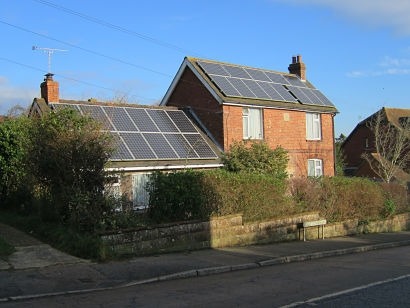
Customers moving to smart export will receive payment for the actual amount of electricity they export, rather than 50 percent of what they generate, which is the FiT scheme’s standard estimate of the proportion of power customers export. The new service means that customers that export over 50 percent have the opportunity to earn more, making payments simpler, clearer and fairer for thousands of homes that micro-generate their own electric power through technologies such as solar panels micro and wind turbines. A small number of Good Energy customers took part in a pilot in December 2022, with numbers scheduled to ramp up throughout the year. Customers will continue to receive their FiT unit rates but with the opportunity to earn more based on how much they actually export onto the grid.
Good Energy plans to roll the service out to 80,000 customers by the end of 2023.
In order to switch to smart export, customers need a second generation smart meter, or a first generation if enrolled with the Data Communications Company. Good Energy recently launched a new online journey for FiT generators to switch at fitswitch.goodenergy.co.uk. The Feed-in Tariff scheme was introduced in 2010, based on the blueprint of Good Energy’s ‘HomeGen’ tariff, but closed to new applicants in 2019. Good Energy has continued to place a strong focus on energy services for small-scale generators, leading to its position as the second largest administrator of the Feed-in Tariff.
Good Energy’s move into smart export marks an evolution for the business as it scales its ambition to help one million homes and businessescut carbon from their energy and transport use by 2025.
The company sees significant potential in the scalability of smart export as demand increases from consumers and businesses looking to generate their own power to reduce their costs and generate income at the same time as reducing their carbon footprint, a trend supported by increasingly affordable low-carbon technology.
Following this launch, Good Energy plans to introduce a new market leading domestic export tariff for households in the first few months of 2023. It also intends to offer solar installations, having brought on the capability through the acquisition of Igloo Works in December 2022, as part of its strategy to provide services which help homes and businesses generate, store, use and share their own power.
“Good Energy has long been a pioneer in supporting small scale clean energy generation, and this launch continues that tradition of innovation” said Nigel Pocklington, CEO, Good Energy. “As a leading player in helping homes and businesses generate their own clean power, it’s a big moment not only for Good Energy but for a future decarbonised, decentralised and digitalised electricity grid. The switch from deemed to actual metered export for tens of thousands of small generators, and all the data that will provide, is a huge step in making that future a reality.”
For additional information:

